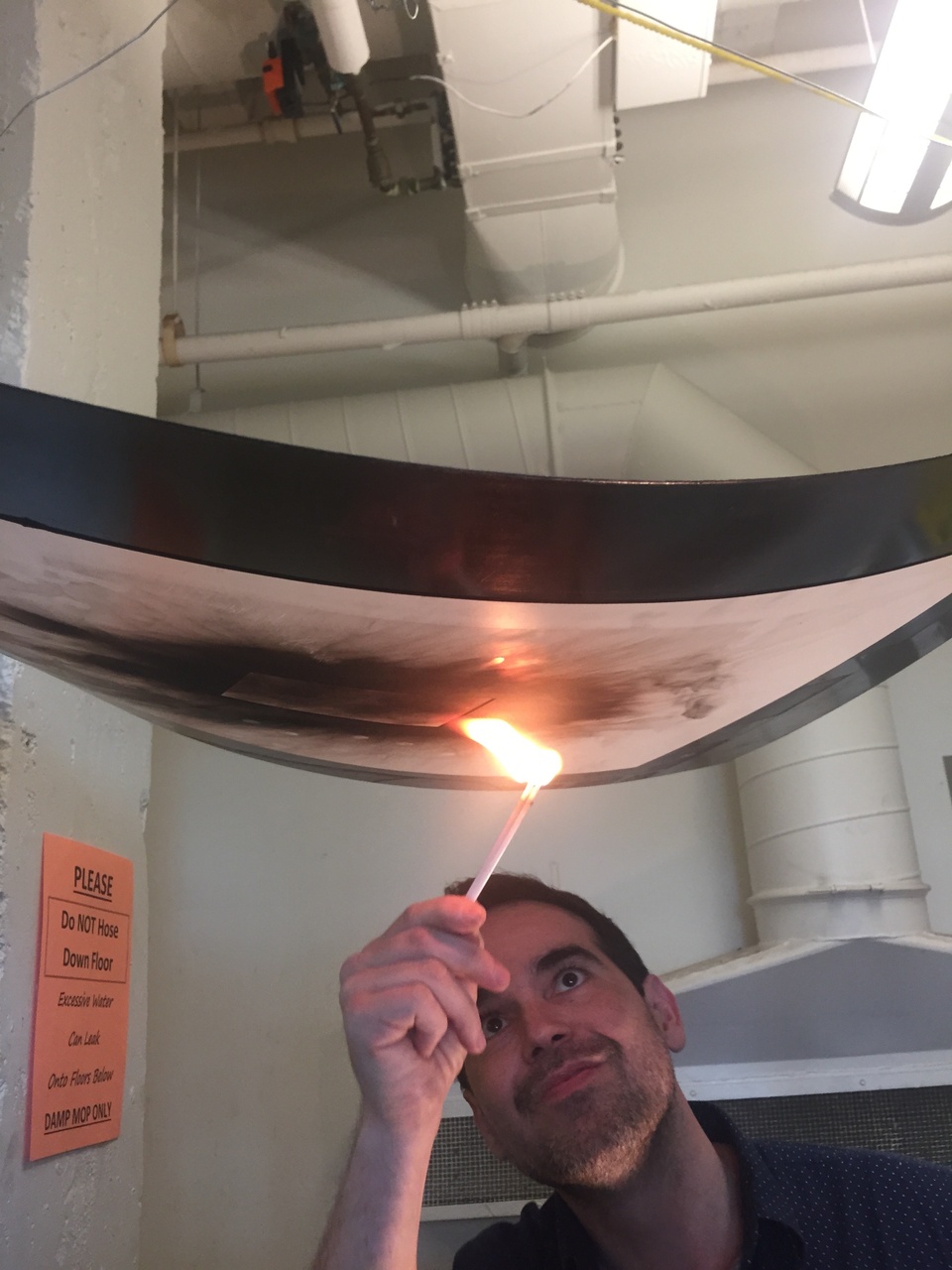Dario Robleto
The First Time, The Heart
The First Time, The Heart (First Pulse, Flatline) is a special print edition that is part of a larger project by Dario Robleto titled, The First Time, The Heart: A Portrait of Life, 1854-1913, a set of 50 prints housed in a clamshell portfolio box, also published by Island Press.
To honor the original method of recording the human heart beat used by 19th century physiologists—mark making in soot—Robleto, working with Island Press, devised a novel printing method merging lithography with hand-flamed and sooted paper. A high-resolution scan was taken of the original, historic pulse lines, which were printed lithographically in transparent ink. The paper was then hand-flamed, depositing an atmospheric layer of soot over the image area. After the paper was briefly submerged in a bath of shellac and denatured alcohol to fix the soot to the paper, lithotine (a purified, petroleum-based solvent) was applied to the printed lines and text with a brush to gently lift the image from the soot ground, revealing the white lines.
The human quest to represent our bodily form is ancient. From the earliest known cave drawings tracing the curva- ture of a hand, the masterworks of the human figure by Leonardo di Vinci, even modern medical imaging that maps the terrain of our brains at the level of the neuron, humans have yearned to understand themselves and others through marks and images. Perhaps this deep rooted desire found its most essential form through the invention of an image we often take for granted, and which for the first time in history gave us visual access to the living heart: the pulse wave.
But to visualize this fundamental movement of life is to suggest the possibility of visualizing its opposite: the stillness of death. As revolutionary as it was to invent a new image of life through a simple rhythmic curve, that same curve, stretched long and taut, has produced no less an iconic image of our existence: the flatline.
But where are the first pulse wave and flatline ever recorded? Whose hearts were the first to offer their form, their remnants of a lived, emotionally complex life embedded in the oscillations of a wavy line? What technology needed to be invented to record the long-thought inaccessible heart?
Like the earliest tracing of a hand on an ancient cave wall, these milestones in the history of images should be remembered, honored and empathized with in their ability to universally convey something essential about us over long stretches of time. The diptych of prints, The First Time, the Heart (First Pulse, Flatline), created by Robleto with Island Press, brings together the first successful scientific attempts to mark these poles of life (1853 and 1870, respectively), which changed the way we understand ourselves and communicate our bodies.
Although still very crude, with both the pulse wave and flatline images physicians now had an indirect window into the heart’s behavior, which would revolutionize the scientific study of health and disease. But these lines were not only medical, they were also philosophical in the long arc of human self-reflection. Humans are beautifully creative in the ways we hope meaning—essences—are literally in the lines, images or objects we create to hold them. The first pulse wave and flatline should be remembered as part of that history.
[PROOF essay by Dario Robleto about this project and the diptych The First Time, the Heart (First Pulse, Flatline), specifically. Download brochure with essay by clicking the link to the left.]













